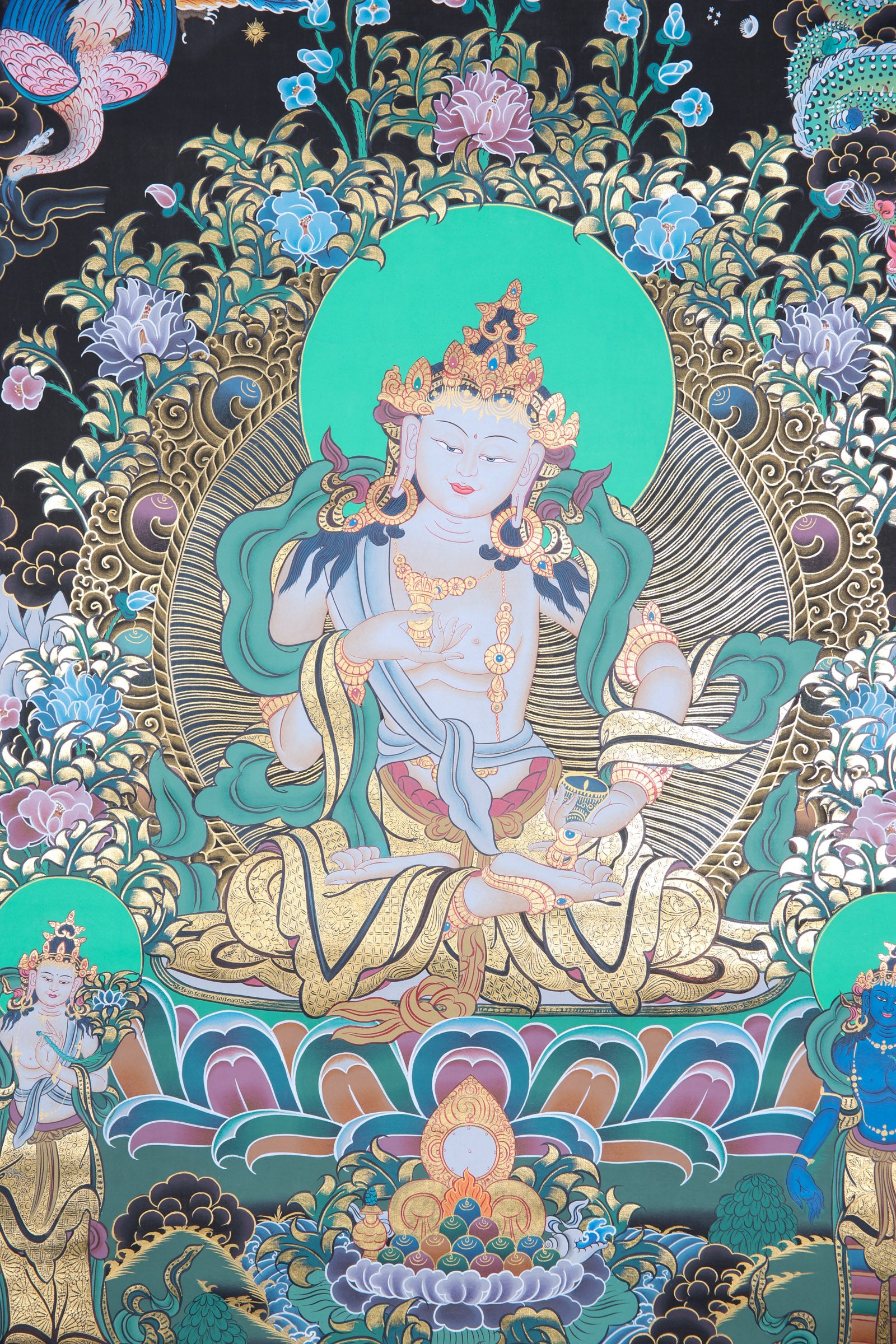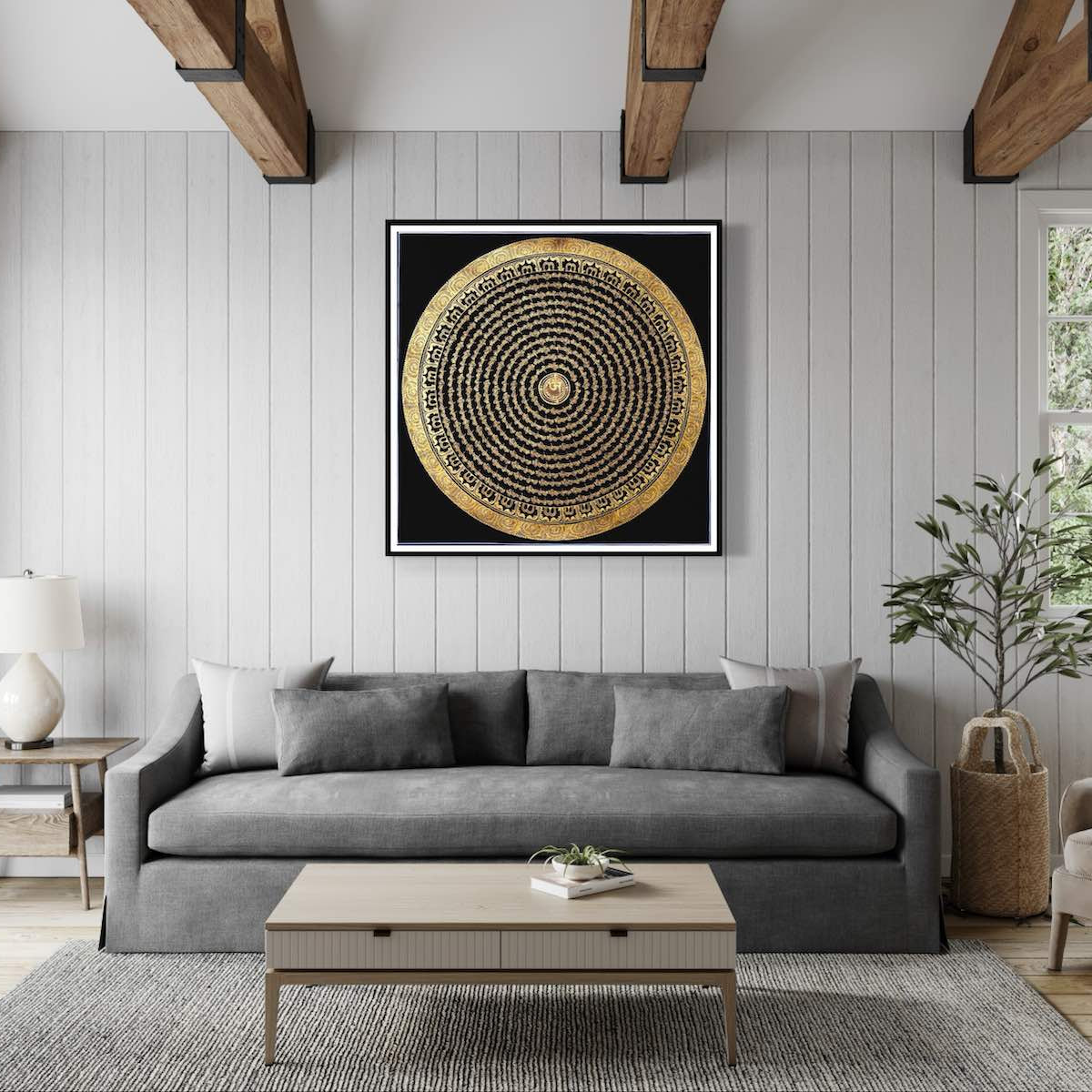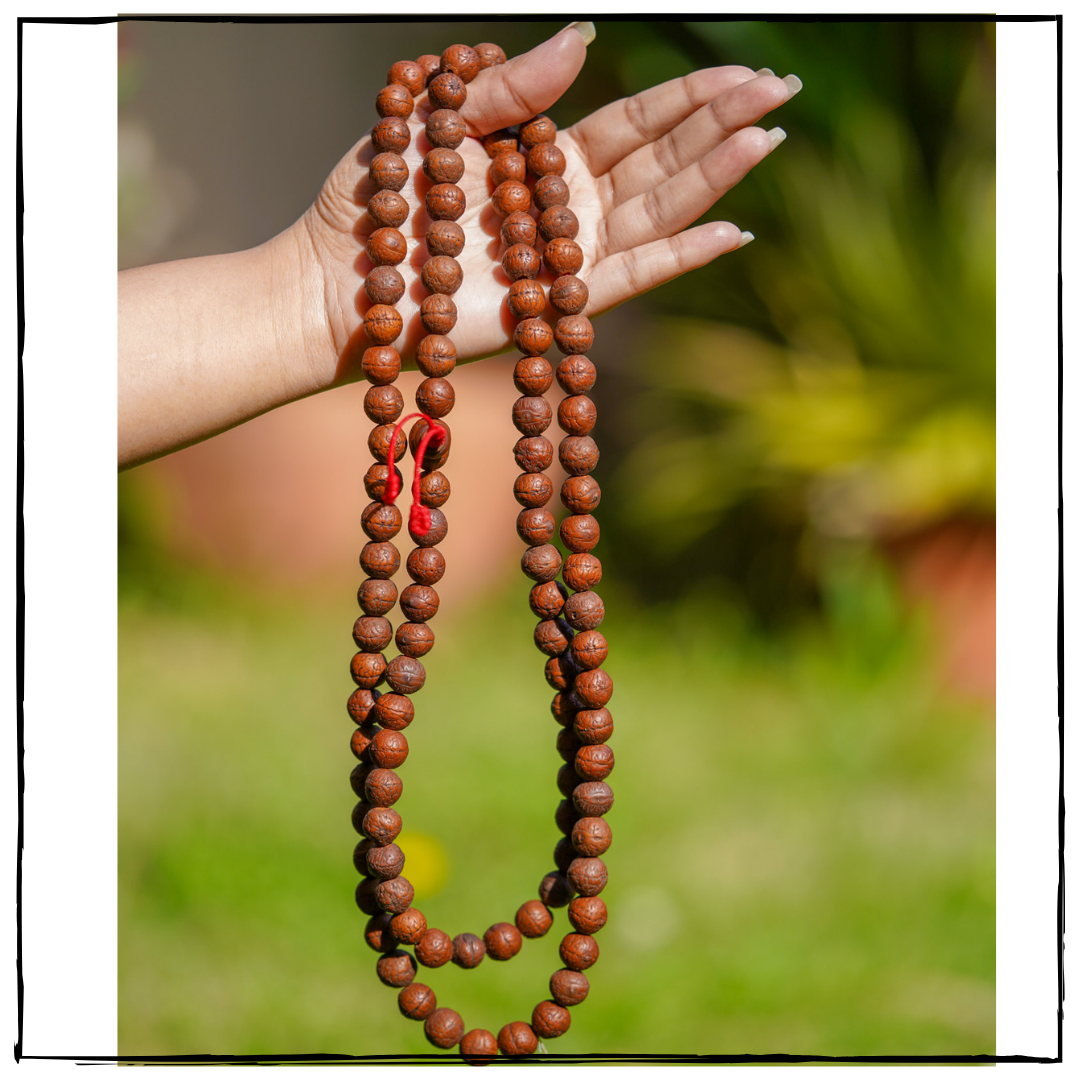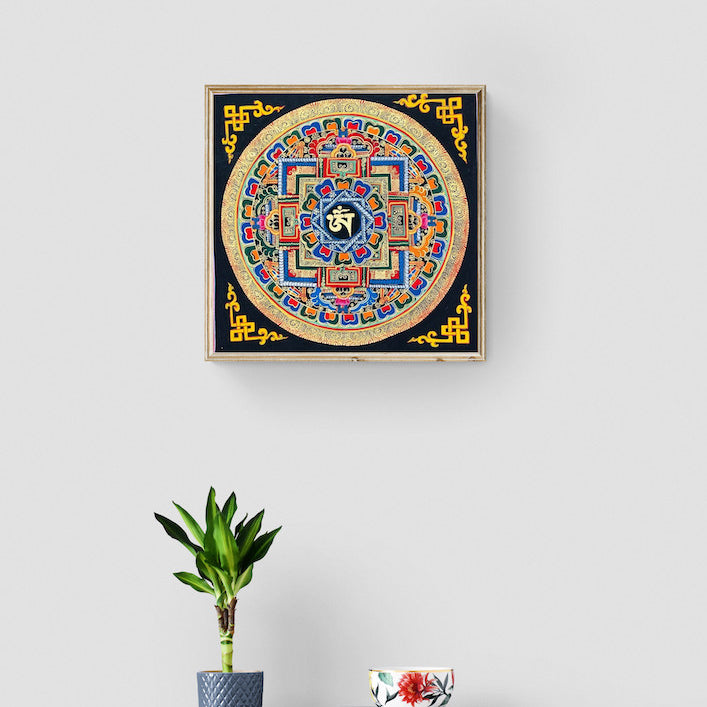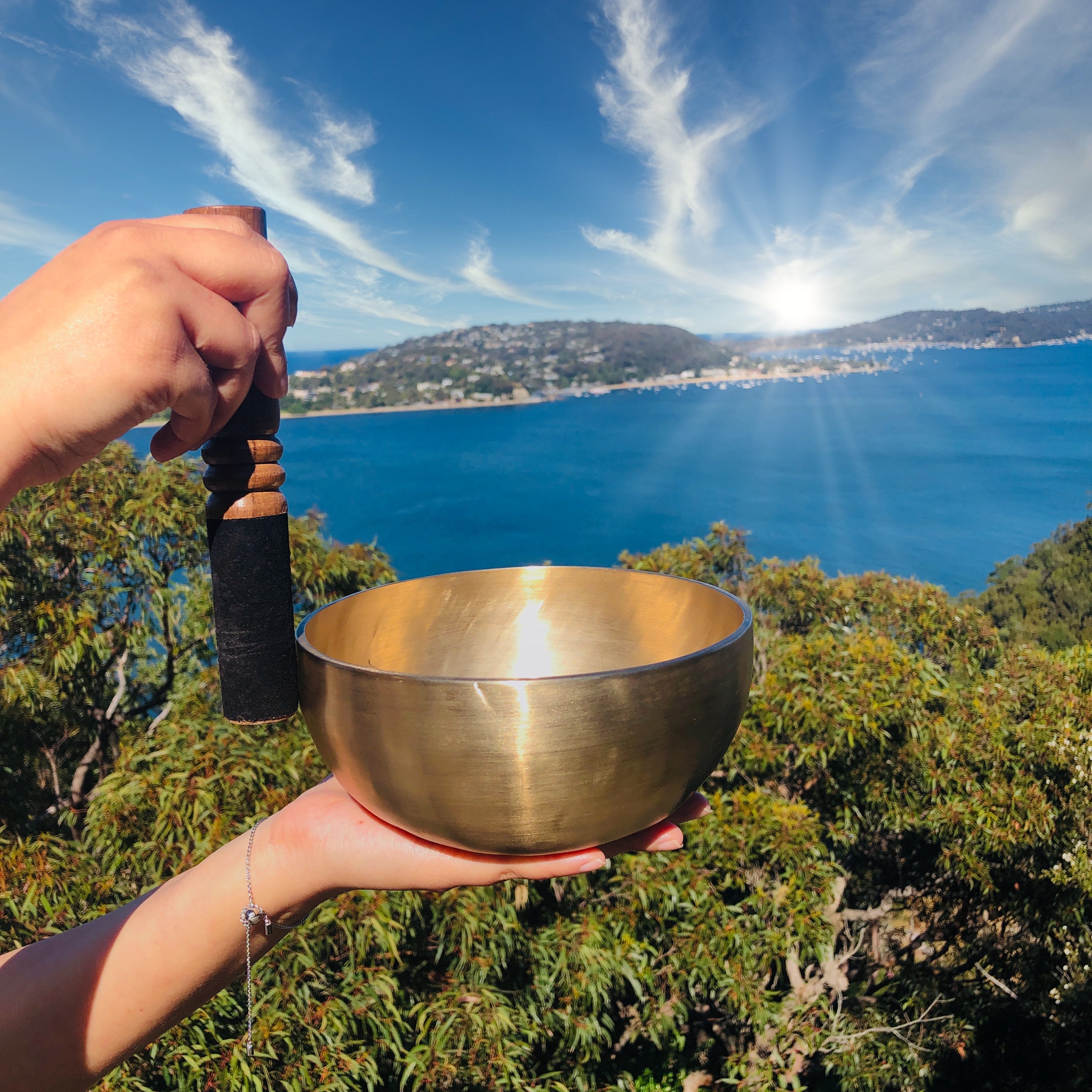Vajrasattva Thangka Painting
Couldn't load pickup availability
Description
Vajrasattva is a significant being in Vajrayana Buddhism, typically displayed on decorative thangka paintings. He is the symbol of purity, summoned to erase detrimental karma and purify the soul and mind. A thangka is a classic Tibetan Buddhist wall scroll painting depicting sacred matters. These paintings are renowned for their attractive intricacies, powerful symbolism, and religious importance.
In the thangka painting, Vajrasattva is depicted in a peaceful, seated position. He is characterized by a white complexion, conveying his purity. His figure typically features two arms, one clutching a vajra (thunderbolt) at his chest and the other holding a bell near his hips. This imagery signifies his impressive combination of compassion and wisdom. To enhance these qualities, he wears a jewel-adorned crown.
Vajrasattva practice is a cornerstone of Vajrayana Buddhism for the elimination of negative karma, mistakes, and impurities. Meditating with a focus on Vajrasattva's image in a thangka painting while chanting mantras is widely believed to cleanse the mind and spirit for further spiritual enlightenment. A thangka painting of Vajrasattva can serve as an inspirational aid to focus practitioners' attention during purification practices.
Product Specification:
- Hand Painted
- Materials: Semi-Precious Natural Minerals
- Base: Cotton Canvas
- Origination: Nepal

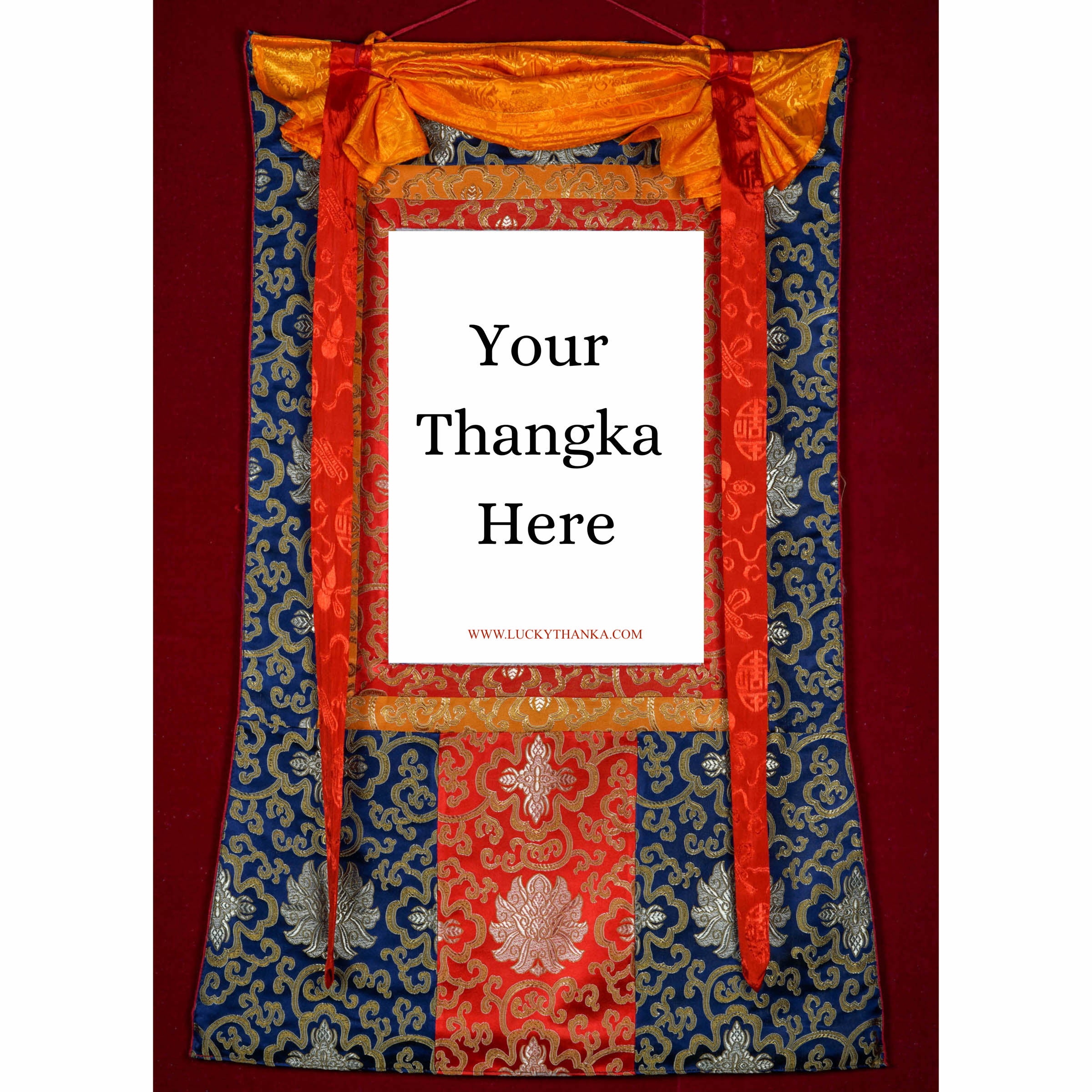
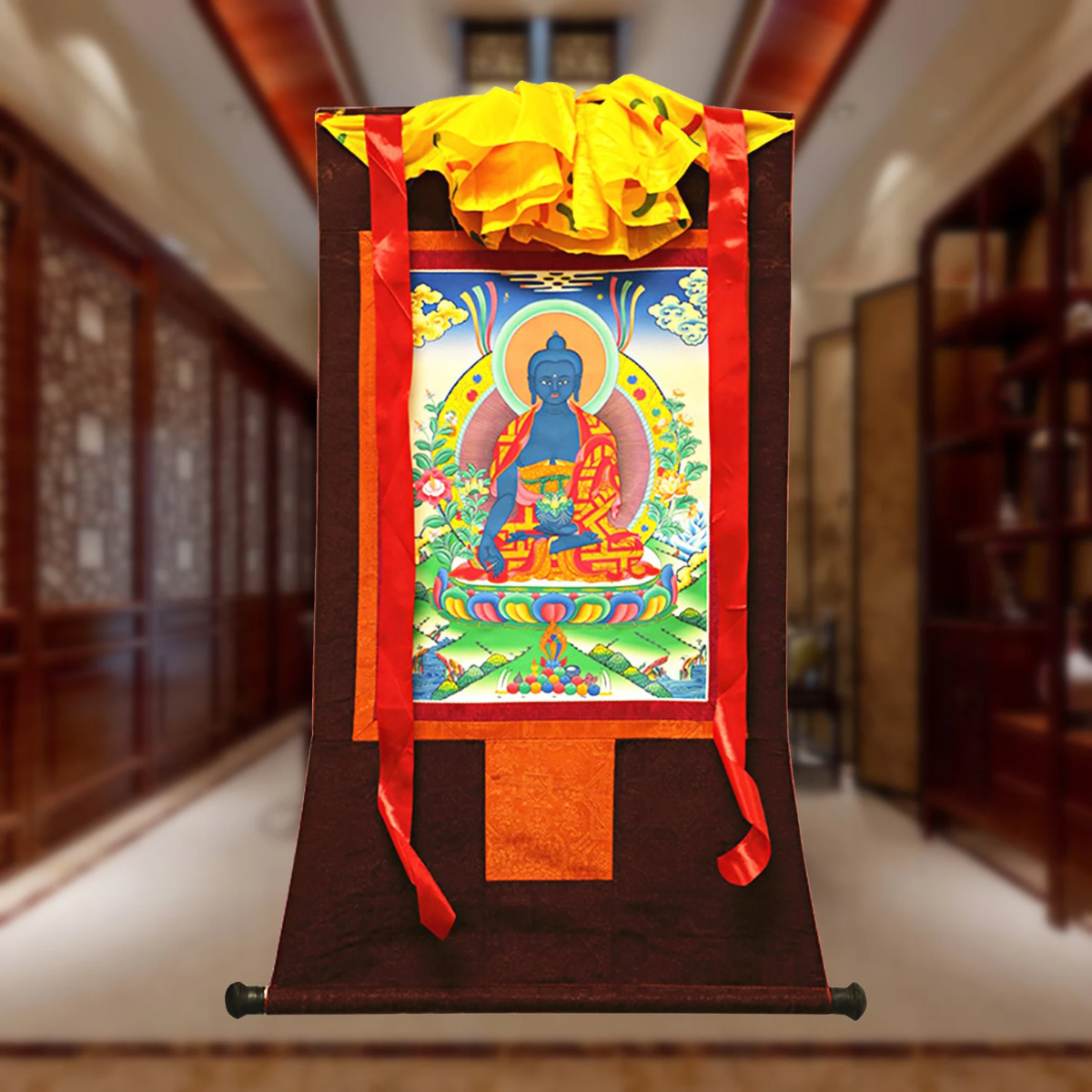
Hand Embroidery Brocade
Want to add a Brocade to your beautiful Thangka Painting? Traditional Style Brocade has been one of the most popular form of mounting as it has a greater religious merit.
Note: Make sure you have added the Thangka to your cart first.
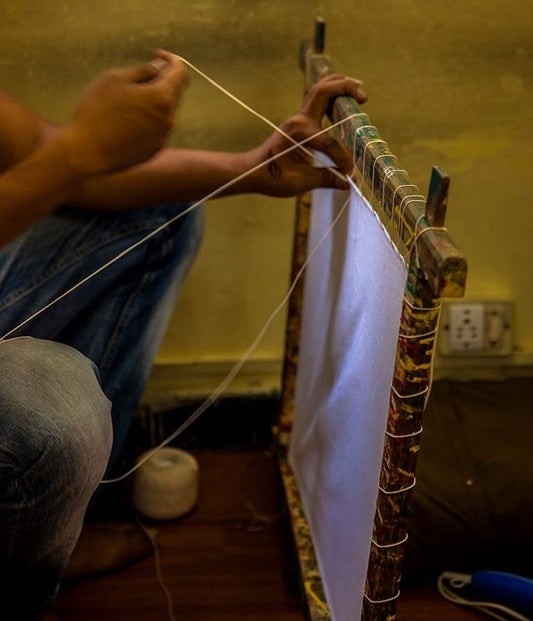
100% Cotton Canvas
Preparing the Cotton canvas before starting to paint a Thangka. This process includes washing, drying, stretching, sizing and everything needed to make a perfect base for the thangka to last for centuries.
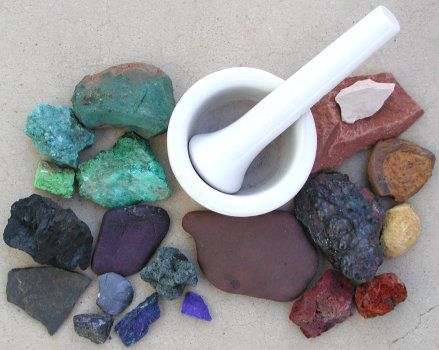
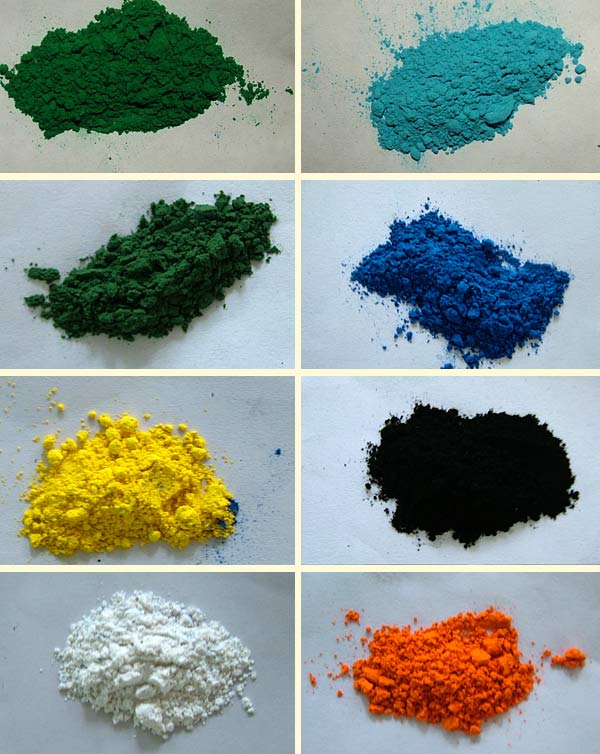
Natural Minerals
Thangka Paintings are painted using the natural minerals. These are firstly grind into the powder form and then used in the thangka as a paint.




